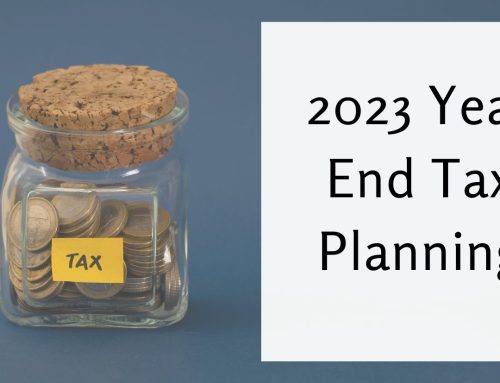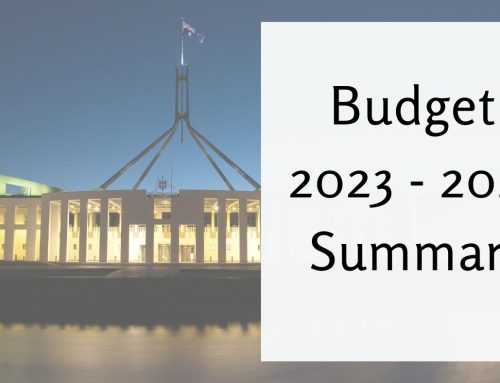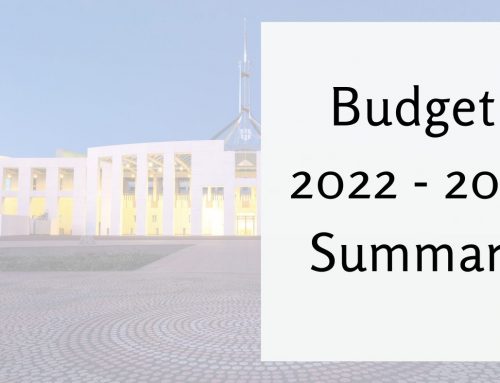On Tuesday, 29 March 2022, Treasurer Josh Frydenberg handed down the 2022-23 Federal Budget.
In an election Budget, the Treasurer announced a range of cost of living measures, including a one-off $420 cost of living tax offset for low and middle income earners, and a $250 payment for pensioners and welfare recipients. The fuel excise will also be reduced by 50% for 6 months, starting from midnight on Budget night.
For small businesses, a Skills and Training Boost will provide a new 20% bonus deduction for eligible external training courses for upskilling employees from Budget night. In addition, businesses will receive a similar 20% bonus deduction for expenditure on digital technologies (eg cloud computing, eInvoicing, cyber security and web design) for investments of up to $100,000 per year.

We have summarised the key points related to individuals, businesses, and superannuation below:
Individuals
Low income offset – LMITO increased by $420 for 2021-22 (but not extended to 2022-23)
The low and middle income tax offset (LMITO) will be increased by $420 for the 2021-22 income year so that eligible individuals will receive a maximum LMITO benefit up to $1,500 for 2021-22 (up from the current maximum of $1,080).
This one-off $420 cost of living tax offset will only apply to the 2021-22 income year. Importantly, the Government did not announce an extension of the LMITO to 2022-23. So it remains legislated to only apply until the end of the 2021-22 income year (albeit up to $1,500 instead of $1,080).
The Government said the LMITO for 2021-22 will be paid from 1 July 2022 to more than 10 million individuals when they submit their tax returns for the 2021-22 income year. Other than those that do not require the full offset to reduce their tax liability to zero, all LMITO recipients will benefit from the full $420 increase. That is, the proposed one-off $420 cost of living tax offset will increase the maximum LMITO benefit in 2021-22 to $1,500 for individuals earning between $48,001 and $90,000 (but phasing out up to $126,000). Those earning up to $48,000 will also receive the $420 one-off tax offset on top of their existing $255 LMITO benefit (phasing up for incomes between $37,001 and $48,000) – see table below.
All other features of the current LMITO remain unchanged (including that it will only apply until the end of the 2021-22 income year). Consistent with the current LMITO, taxpayers with incomes of $126,000 or more will not receive the additional $420.
Low and middle income tax offset for 2021-22 (only)
| Taxable income (TI) | LMITO 2021-22 (current) | LMITA 2021-22 (proposed) |
| $0 – $37,000 | $255 | $675 |
| $37,001 – $48,000 | $255 + ([TI – 37,000] x 7.5%) | $675 + ([TI – 37,000] x 7.5%) |
| $48,001 – $90,000 | $1,080 | $1,500 |
| $90,001 – 126,000 | $1,080 – ([TI – 90,000] x 3%) | $1,500 – ([TI – 90,000] x 3%) |
| $126,001 + | Nil | Nil |
As noted above, the Government has proposed that eligible taxpayers with income up to $126,000 will receive the additional one-off $420 cost of living tax offset for 2021-22 on top of their existing LMITO benefit.
Currently, the amount of the LMITO for 2021-22 is $255 for taxpayers with a taxable income of $37,000 or less. Between $37,000 and $48,000, the value of LMITO increases at a rate of 7.5 cents per dollar to the maximum amount of $1,080. Taxpayers with taxable incomes from $48,000 to $90,000 are eligible for the maximum LMITO of $1,080. From $90,001 to $126,000, LMITO phases out at a rate of 3 cents per dollar.
Low income tax offset (unchanged)
The low income tax offset (LITO) will also continue to apply for the 2021-22 and 2022-23 income years. The LITO was intended to replace the former low income and low and middle income tax offsets from 2022-23, but the new LITO was brought forward in the 2020 Budget to apply from the 2020-21 income year.
Low income tax offset for 2021-22 and 2022-23 (unchanged)
| Taxable income (TI) | Amount of offset |
| $0 – $37,500 | $700 |
| $37,501 – $45,000 | $700 – ([TI – $37,500] x 5%) |
| $45,001 – $66,667 | $325 – ([TI – $45,000] x 1.5%) |
| $66,668 + | Nil |
The maximum amount of the LITO is $700. The LITO will be withdrawn at a rate of 5 cents per dollar between taxable incomes of $37,500 and $45,000 and then at a rate of 1.5 cents per dollar between taxable incomes of $45,000 and $66,667
Personal tax rates unchanged for 2022-23; Stage 3 start from 2024-25 unchanged
The Low & Middle Income Tax Offset (LMITO) that was introduced for the 2020 tax year has been In the Budget, the Government did not announce any personal tax rates changes. The Stage 3 tax changes commence from 1 July 2024, as previously legislated.
Resident rates and thresholds for 2022-23
The 2022-23 tax rates and income thresholds for residents (unchanged from 2021-22) are:
| Taxable income ($) | Tax Payable ($) |
| 0 – 18,200 | Nil |
| 18,201 – 45,000 | Nil + 19% of excess over 18,200 |
| 45,001 – 120,000 | 5,092 + 32.5% of excess over 45,000 |
| 120,001 – 180,000 | 29,467 + 37% of excess over 120,000 |
| 180,001+ | 51,667 + 45% of excess over 180,000 |
Stage 3: rates and thresholds from 2024-25 onwards
The Stage 3 tax changes commence from 1 July 2024, as previously legislated. From 1 July 2024, the 32.5% marginal tax rate will be cut to 30% for one big tax bracket between $45,000 and $200,000. This will more closely align the middle tax bracket of the personal income tax system with corporate tax rates. The 37% tax bracket will be entirely abolished at this time.
Therefore, from 1 July 2024, there will only be 3 personal income tax rates – 19%, 30% and 45%. From 1 July 2024, taxpayers earning between $45,000 and $200,000 will face a marginal tax rate of 30%. With these changes, around 94% of Australian taxpayers are projected to face a marginal tax rate of 30% or less.
Resident rates and thresholds – from 2024-25 onwards
The Government has proposed that the existing tax residency tests for individuals will be replaced with a The tax rates and income thresholds from the 2024-25 for residents (as already legislated) are:
| Taxable income ($) | Tax Payable ($) |
| 0 – 18,200 | Nil |
| 18,201 – 45,000 | Nil + 19% of excess over 18,200 |
| 45,001 – 200,000 | 5,092 + 30% of excess over 45,000 |
| 200,001+ | 51,592 + 45% of excess over 200,000 |
Rates and thresholds – summary
Tax rates and income thresholds
| Rate | 2021-22 | 2022-23 to 2023-24 | From 1.7.2024 (unchanged) |
| Nil | $0 – $18,200 | $0 – $18,200 | $0 – $18,200 |
| 19% | $18,201 – $45,000 | $18,201 – $45,000 | $18,201 – $45,000 |
| 30% | N/A | N/A | $45,001 – $200,000 |
| 32.5% | $45,001 – $120,000 | $45,001 – $120,000 | N/A |
| 37% | $120,001 – $180,000 | $120,001 – $180,000 | N/A |
| 45% | $180,001 + | $180,001 + | $200,001 + |
| Low and middle income tax offset (LMITO) | Up to $1,500 (proposed) | N/A | N/A |
| Low income tax offset (LITO) | Up to $700 | Up to $700 | Up to $700 |
Foreign residents
For 2022-23, the tax rates for foreign residents (unchanged from 2021-22) are:
- $0 – $120,000 – 32.5%;
- $120,001 – $180,000 – 37%;
- $180,001+ – 45%.
For 2024-25 and later income years, the tax rates for foreign residents are:
- $0 – 200,000 – 30%;
- $200,001+ – 45%.
Working holidaymakers
For 2022-23, the rates of tax for working holiday makers (unchanged from 2021-22) are:
- $0 – $45,000 – 15%;
- $45,001 – $120,000 – 32.5%;
- $120,001 – $180,000 – 37%;
- $180,001+ – 45%.
For 2024-25 and later income years, the rates of tax for working holiday makers are:
- $0 – $45,000 – 15%;
- $45,001 – $200,000 – 30%;
- $200,001+ – 45%.
Medicare levy low-income thresholds for 2021-22
For the 2021-22 income year, the Medicare levy low-income threshold for singles will be increased to $23,365 (up from $23,226 for 2020-21). For couples with no children, the family income threshold will be increased to $39,402 (up from $39,167 for 2020-21). The additional amount of threshold for each dependent child or student will be increased to $3,619 (up from $3,597).
For single seniors and pensioners eligible for the SAPTO, the Medicare levy low-income threshold will be increased to $36,925 (up from $36,705 for 2020-21). The family threshold for seniors and pensioners will be increased to $51,401 (up from $51,094), plus $3,619 for each dependent child or student.
Date of effect
The increased thresholds will apply to the 2021-22 and later income years. Note that legislation is required to amend the thresholds and a Bill will be introduced shortly.
COVID-19 test expenses to be deductible
The Budget papers confirm that the costs of taking a COVID-19 test to attend a place of work are tax deductible for individuals from 1 July 2021. In making these costs tax deductible, the Government will also ensure FBT will not be incurred by businesses where COVID-19 tests are provided to employees for this purpose.
Date of effect
The changes will take effect from 1 July 2021 (ie last year). It was previously announced on 8 February 2022: see 2022 WTB 6 [105].
The cost to revenue is stated to be “significant but unquantifiable”.
Businesses
Deduction boosts for small business: skills and training and digital adoption
The Government announced two support measures for small businesses (aggregated annual turnover less than $50 million) in the form of a 20% uplift of the amount deductible for expenditure incurred on external training courses and digital technology.
External training courses
An eligible business will be able to deduct an additional 20% of expenditure incurred on external training courses provided to its employees. The training course must be provided to employees in Australia or online, and delivered by entities registered in Australia.
Some exclusions will apply, such as for in-house or on-the-job training.
The boost will apply to eligible expenditure incurred from 7:30pm (AEDT) on 29 March 2022 until 30 June 2024.
The boost for eligible expenditure incurred by 30 June 2022 will be claimed in tax returns for the following income year. The boost for eligible expenditure incurred between 1 July 2022 and 30 June 2024, will be included in the income year in which the expenditure is incurred.
Digital adoption
An eligible business will be able to deduct an additional 20% of the cost incurred on business expenses and depreciating assets that support its digital adoption, such as portable payment devices, cyber security systems or subscriptions to cloud-based services.
An annual cap will apply in each qualifying income year so that expenditure up to $100,000 will be eligible for the boost.
The boost will apply to eligible expenditure incurred from 7:30pm (AEDT) on 29 March 2022 until 30 June 2023.
The boost for eligible expenditure incurred by 30 June 2022 will be claimed in tax returns for the following income year. The boost for eligible expenditure incurred between 1 July 2022 and 30 June 2023 will be included in the income year in which the expenditure is incurred.
Superannuation
Superannuation pension drawdowns – 50% reduction extended to 2022-23
The temporary 50% reduction in minimum annual payment amounts for superannuation pensions and annuities will be extended by a further year to 30 June 2023.
The 50% reduction in the minimum pension drawdowns, which has applied for the 2019-20, 2020-21 and 2021-22 income years, was due to end on 30 June 2022. However, the Government announced that the SIS Regulations will be amended to extend this temporary 50% reduction for minimum annual pension payments to the 2022-23 income year. Given ongoing volatility, the Government said the extension of this measure to 2022-23 will allow retirees to avoid selling assets in order to satisfy the minimum drawdown requirements.
Minimum drawdowns reduced 50% for 2022-23
The reduction in the minimum payment amounts for 2022-23 is expected to apply to account-based, allocated and market linked pensions. Minimum payments are determined by age of the beneficiary and the value of the account balance as at 1 July each year under Sch 7 of the SIS Regs.
| Age of beneficiary (years) | Standard percentage factor (%) | Minimum drawdown for 2019-20 to 2021-22 (and 2022-23 proposed) (after 50% reduction) |
| 0-64 | 4 | 2 |
| 65-74 | 5 | 2.5 |
| 75-79 | 6 | 3 |
| 80-84 | 7 | 3.5 |
| 85-89 | 9 | 4.5 |
| 90-94 | 11 | 5.5 |
| 95+ | 14 | 7 |
No maximum annual payments apply, except for transition to retirement pensions which have a maximum annual payment limit of 10% of the account balance at the start of each financial year.
For the purposes of determining the minimum payment amount for an account-based pension or annuity for the financial years commencing 1 July 2019, 1 July 2020, 1 July 2021 (and 1 July 2022 proposed), the minimum payment amount is half the amount worked under the formula in clause 1 of Sch 7 of the SIS Regs. The relevant percentage factor is based on the age of the beneficiary on 1 July in the financial year in which the payment is made (or on the commencement day if the pension commenced in that year).
For market linked income streams (MLIS), the minimum payment amount for the financial years commencing 1 July 2019, 1 July 2020, 1 July 2021 (and 1 July 2022 proposed) must be not less than 45% (and not greater than 110%) of the amount determined under the standard formula in clause 1 of Sch 6 of the SIS Regs.
Super Guarantee no change to legislated rate rise to 10.5% for 2022-23
The Government introduced “Downsizer” contribution rules which allowed persons aged 65 or above to
The Budget did not announce any change to the timing of the next Super Guarantee (SG) rate increase. The SG rate is currently legislated to increase from 10% to 10.5% from 1 July 2022, and by 0.5% per year from 1 July 2023 until it reaches 12% from 1 July 2025.
With the SG rate set to increase to 10.5% for 2022-23 (up from 10%), employers need to be mindful that they cannot use an employee’s salary sacrificed contributions to reduce the employer’s extra 0.5% of super guarantee. The ordinary time earnings (OTE) base for super guarantee purposes now specifically includes any sacrificed OTE amounts. This means that contributions made on behalf of an employee under a salary sacrifice arrangement (defined in s 15A of the Superannuation Guarantee (Administration) Act 1992 (SGAA)) are not treated as employer contributions which reduce an employer’s charge percentage.
SG opt-out for high-income earners
The increase in the SG rate to 10.5% from 1 July 2022 also means that the SG opt-out income threshold will decrease to $261,904 from 1 July 2022 (down from $275,000). High-income earners with multiple employers can opt-out of the SG regime in respect of an employer to avoid unintentionally breaching the concessional contributions cap ($27,500 for 2021-22 and 2022-23). Therefore, the SG opt-out threshold from 1 July 2022 will be $261,904 ($27,500 divided by 0.105).
Other Measures
One-off $250 cost of living payment
The Government will make a $250 one-off cost of living payment in April 2022 to 6 million eligible pensioners, welfare recipients, veterans and eligible concession card holders.
The $250 payment will be tax-exempt and not count as income support for the purposes of any Government income support. A person can only receive one economic support payment, even if they are eligible under 2 or more of the categories outlined below.
The payment will only be available to Australian residents who are eligible recipients of the following payments and to concession card holders:
- Age Pension
- Disability Support Pension
- Parenting Payment
- Carer Payment
- Carer Allowance (if not in receipt of a primary income support payment)
- Jobseeker Payment
- Youth Allowance
- Austudy and Abstudy Living Allowance
- Double Orphan Pension
- Special Benefit
- Farm Household Allowance
- Pensioner Concession Card (PCC) holders
- Commonwealth Seniors Health Card holders
- eligible Veterans’ Affairs payment recipients and Veteran Gold card holders.
Temporary reduction in fuel excise
The Government will reduce the excise and excise-equivalent customs duty rate that applies to petrol and diesel for 6 months by 50%. The excise and excise-equivalent customs duty rates for all other fuel and petroleum-based products, except aviation fuels, will also be reduced by 50% for 6 months.
The Treasurer said this measure will see excise on petrol and diesel cut from 44.2 cents per litre to 22.1 cents. Mr Frydenberg said a family with 2 cars who fill up once a week could save around $30 a week or around $700 over the next 6 months. The Treasurer made a point of emphasising that the ACCC will monitor the price behaviour of retailers to ensure that the lower excise rate is fully passed on.
Date of effect
The measure will commence from 12.01am on 30 March 2022 and will remain in place for 6 months, ending at 11.59pm on 28 September 2022.
The measure is estimated to decrease receipts by $5.6bn, and decrease payments by $2.7bn over the forward estimates.
Apprentice wage subsidy support extension
The Budget confirms the Government’s earlier announcement to extend the Boosting Apprenticeship Commencement (BAC) and Completing Apprenticeship Commencements (CAC) wage subsidies by 3 months to 30 June 2022.
The Budget also includes funding over 5 years to introduce a new Australian Apprenticeships Incentive System from 1 July 2022 as further support to employers and apprentices in “priority occupations”.
Company registration and lifecycle management system to be modernised
The Government confirmed that Australia’s Business Registers (ie its company registration and lifecycle management system) will be moving to a modernised platform by September 2023. The reforms include:
- removing the companies annual late review fee;
- reducing the number of fees paid for ad hoc lodgements under current requirements;
- removing fees for searches conducted on the new registry website; and
- providing funding to Treasury to redesign wholesale business register search services (facilitated by third-party services).
First Home Guarantee Scheme: additional places announced
The Government has announced that it will expand the Home Guarantee Scheme in the 2022-23 Budget to make available up to 50,000 places each year, including 10,000 places for a new Regional Home Guarantee open to non-first home buyers.
Under the expanded Scheme, the Government said it will make available:
- 35,000 guarantees each year (up from the current 10,000), from 1 July 2022 under the First Home Guarantee, to support eligible first homebuyers to purchase a new or existing home with a deposit as low as 5%;
- 10,000 guarantees each year (from 1 October 2022 to 30 June 2025), under a new Regional Home Guarantee, to support eligible homebuyers (including non-first home buyers and permanent residents, to purchase or construct a new home in regional areas), subject to the passage of enabling legislation; and
- 5,000 guarantees each year (from 1 July 2022 to 30 June 2025) to expand the Family Home Guarantee to help eligible single parents with children to buy their first home or to re-enter the housing market with a deposit of as little as 2%.
Mr Frydenberg said the Home Guarantee Scheme seeks to ensure part of an eligible buyer’s home loan is guaranteed by the Government so they can buy a home sooner with a smaller deposit and without needing to pay lenders mortgage insurance.
Under the existing Scheme, eligible first home buyers can obtain a loan to build a new home or purchase a newly built home with a deposit of as little as 5%. The Scheme provides a Government-backed guarantee equals to the difference between the deposit and 20% of the purchase price. Applications can be made as part of the standard home loan application process through participating lenders.
If you would like to discuss how the 2022 – 2023 Federal Budget may impact you please contact our office.





